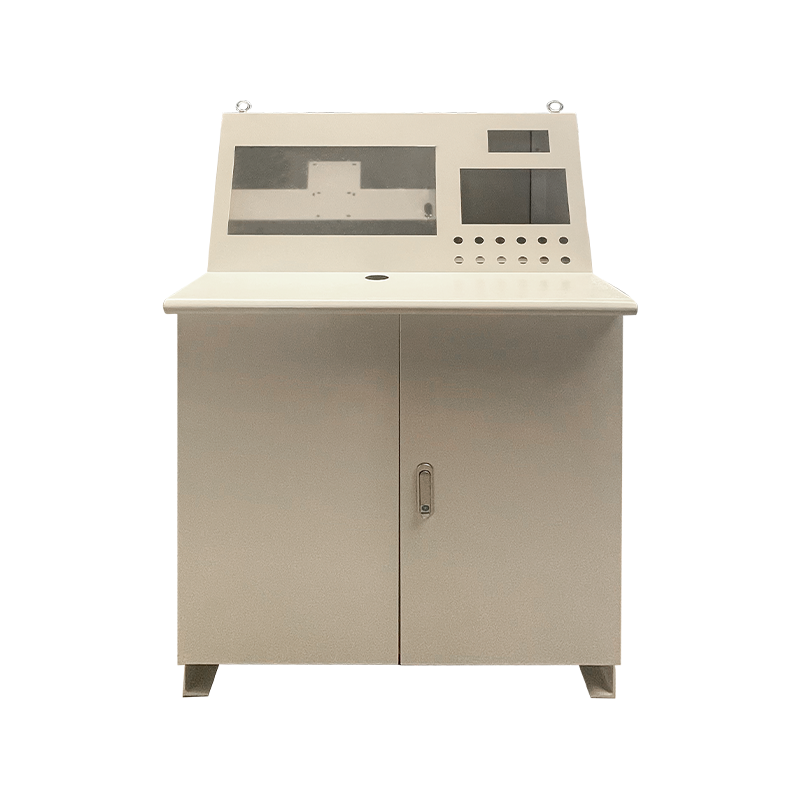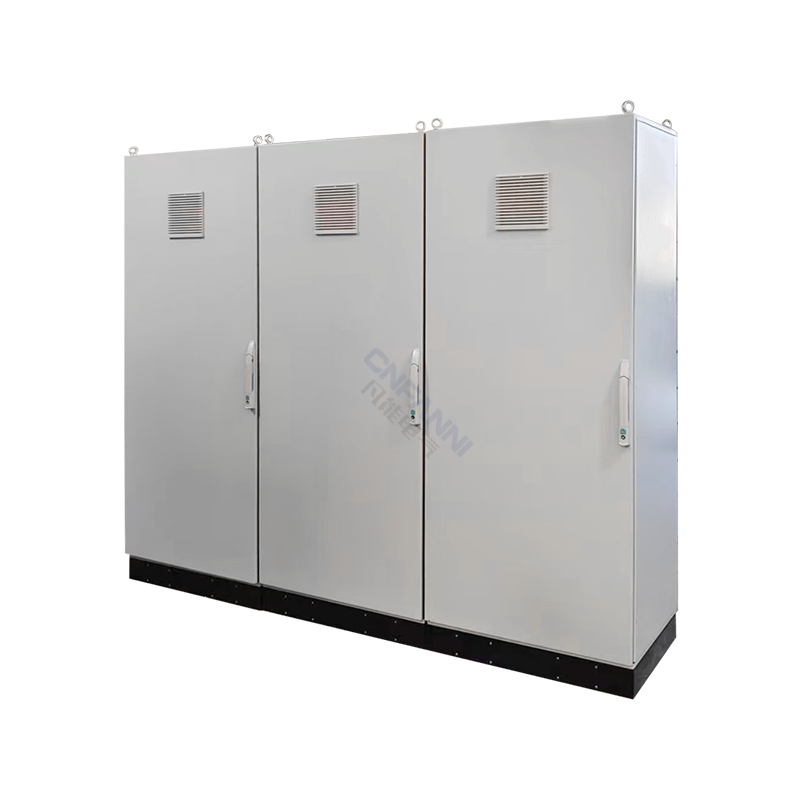Industrial automation enclosure control cabinets are central to the safe and efficient operation of automated systems in manufacturing, utilities, and various industrial environments. These enclosures house critical electrical and electronic components, including programmable logic controllers (PLCs), human-machine interfaces (HMIs), relays, circuit breakers, and power supplies. Their primary purpose is to protect these components from environmental hazards, organize electrical connections, and facilitate maintenance while ensuring reliable and continuous operation of industrial automation systems.
They typically contain programmable logic controllers (PLCs), relays, circuit breakers, power supplies, and human-machine interfaces (HMIs), all arranged for efficient operation and maintenance. Constructed from durable materials such as steel or aluminum, these enclosures provide protection against dust, moisture, and mechanical impact, ensuring reliable performance in industrial environments.
Design Considerations for Industrial Automation Control Cabinets
Designing an industrial automation control cabinet requires careful planning to ensure both functionality and safety. One of the one considerations is load assessment, which involves determining the total electrical load of the components to avoid overloading circuits. Proper load assessment informs decisions about the size of circuit breakers, wiring capacity, and ventilation needs.
Internal layout optimization is critical for accessibility and organization. Components should be arranged to allow technicians easy access for inspection, testing, and replacement. Modular layouts can facilitate future upgrades and simplify troubleshooting. Proper cable management is also essential; using conduits, cable trays, and organized routing reduces the risk of interference, overheating, and accidental contact.
Environmental protection is another key factor. Enclosures should be rated according to IP or NEMA standards depending on exposure to dust, moisture, or corrosive elements. Cooling and ventilation systems, such as forced-air fans or natural convection, help maintain good temperatures and prevent thermal stress on sensitive components. Additionally, the enclosure should include secure doors and grounding provisions to enhance operational safety.
Essential Components of Control Cabinets in Automation
Industrial automation control cabinets typically house a range of components that collectively manage and monitor automated processes. Programmable logic controllers (PLCs) are central to automation, executing control logic and communicating with sensors and actuators throughout the system. Human-machine interfaces (HMIs) allow operators to monitor system performance, adjust parameters, and receive alerts in real-time.
Variable frequency drives (VFDs) are often included to control the speed and torque of electric motors, improving energy efficiency and process precision. Circuit breakers and fuses protect the system from overloads and short circuits, preventing damage to sensitive devices. Relays and terminal blocks provide signal routing and safe connection points for field devices. Power supplies and transformers ensure that components receive consistent and reliable voltage, while signal conditioning and isolation devices help protect sensitive electronics from electrical noise and interference.
Each component must be carefully selected to match system requirements and comply with safety standards. Their arrangement within the cabinet should small heat accumulation and allow easy access for maintenance or replacement.
Maintenance good Practices for Control Cabinets
Regular maintenance of industrial automation control cabinets is critical to ensure long-term reliability and safe operation. Routine inspections should check for signs of wear, corrosion, loose connections, or damage to components. Cleaning is important to remove dust, dirt, or debris that can obstruct ventilation and cause overheating.
Testing individual components, including circuit breakers, relays, and PLC inputs and outputs, ensures proper functioning. Thermal imaging can identify hotspots caused by loose connections or overloaded circuits before they result in failure. Documentation updates are also essential; keeping accurate records of wiring changes, maintenance actions, and component replacements facilitates troubleshooting and ensures compliance with safety regulations.
Engaging qualified professionals for complex servicing, upgrades, or troubleshooting is recommended to reduce risk and ensure adherence to electrical safety standards. Regular maintenance smalls downtime, prolongs the service life of the cabinet, and improves system efficiency.
Applications of Industrial Control Cabinets
Industrial control cabinets are widely used in a variety of applications. In manufacturing processes, they manage production lines, machinery, and robotics, ensuring consistent operation and coordination between devices. In energy management systems, control cabinets regulate power distribution, monitor consumption, and control lighting, HVAC, or industrial equipment.
In water and wastewater treatment facilities, cabinets house automation equipment that controls pumps, valves, and sensors, ensuring continuous treatment operations. Building management systems (BMS) also rely on control cabinets to centralize control of HVAC, lighting, and security systems. In renewable energy installations, cabinets protect inverters, monitoring systems, and control devices, supporting safe and reliable energy conversion. Additionally, industrial cabinets are essential in robotics and motion control systems, where precise automation requires organized and protected control electronics.
The versatility of these cabinets makes them suitable for any environment that requires organized, safe, and reliable housing of electrical and automation equipment. Their design can be tailored to the complexity and scale of the application.
Selecting the Right Enclosure for Industrial Applications
Choosing the appropriate enclosure is crucial for the performance and durability of a control cabinet. Factors to consider include environmental conditions, such as temperature extremes, humidity, dust, and exposure to chemicals. Enclosures must be rated according to IP or NEMA standards to match the operating environment.
Material selection is also important. Steel or aluminum enclosures provide structural strength, durability, and resistance to corrosion. The size of the enclosure should accommodate all components while allowing for adequate spacing, proper ventilation, and future expansion. Mounting options, such as wall-mounted, floor-mounted, or freestanding cabinets, depend on available space and accessibility requirements.
Other considerations include ease of maintenance, including removable panels, clear labeling, and organized internal layout. Enclosures that allow straightforward cable entry, routing, and termination reduce installation time and improve long-term usability. For industrial automation, selecting an enclosure that balances protection, accessibility, and modularity ensures reliable operation and simplifies system upgrades.
Industrial automation enclosure control cabinets are fundamental to the safe, efficient, and organized operation of modern automated systems. Proper design, component selection, maintenance, and enclosure choice ensure reliable performance across various industrial environments. Their applications span manufacturing, energy management, water treatment, building automation, renewable energy, and robotics, demonstrating their versatility and importance. Careful planning and adherence to industry standards make these cabinets essential for managing complex industrial automation systems while providing flexibility for future upgrades and technological integration.
Many cabinets support modular layouts, enabling easy upgrades or expansion as automation requirements evolve. Furthermore, industrial automation enclosure control cabinets can integrate with digital monitoring systems, providing real-time data on performance and energy usage. Overall, they are essential for maintaining reliable, safe, and efficient operation in modern industrial automation environments.


 English
English русский
русский عربى
عربى








